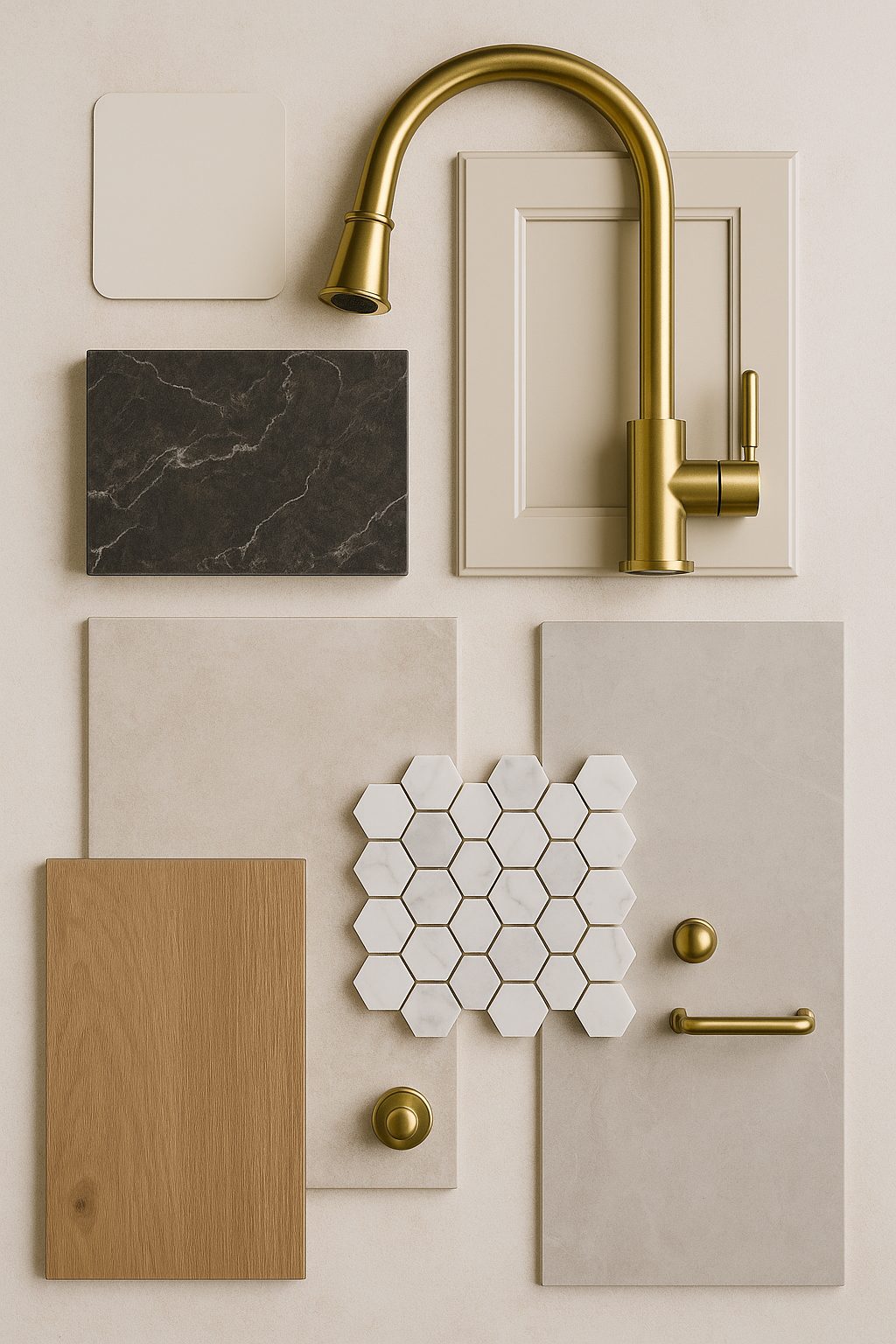If you’ve ever watched a renovation timeline unravel, you probably assumed it was due to slow contractors or unexpected structural issues. But in reality? One of the biggest (and most avoidable) causes of delay is much simpler: finish selection.
We’re talking about your tile, plumbing fixtures, flooring, hardware, lighting — all the “pretty stuff” that brings your space to life. While these details may seem like things you can pick later, the truth is: your entire renovation schedule depends on them.
Especially in fast-paced, high-pressure environments like New York City, not selecting or coordinating finishes early enough can cost you weeks in delays and thousands in change orders or rushed decisions.
Why Finish Selection Shouldn’t Wait
Many homeowners think finish selection is a cosmetic step. It’s not.
Your contractor needs to know your choices — and have them on site — to do things like:
- Set plumbing and electrical rough-ins to the correct heights
- Order specialty materials or tools needed for install
- Sequence trades like tile, cabinetry, and paint properly
- Pass inspections that require installed fixtures or code-specific materials
And that’s not even accounting for lead times, which are no joke. Some tile takes 8–10 weeks to arrive. That custom vanity faucet you fell in love with? It might ship from Europe or come in multiple boxes — and if just one piece is backordered, the whole bathroom gets held up.
When You’re Supplying the Finishes Yourself
Plenty of homeowners want to buy their own finishes, and that’s completely fine — as long as the process is clearly communicated and well-organized.
Here’s what can go wrong when a client supplies finishes but doesn’t coordinate early:
- The wrong rough-in is installed because the contractor didn’t have the specs
- The delivery arrives late, damaged, or incomplete
- The item is incompatible with your layout, and the walls have to be opened again
- Your contractor or tradespeople can’t be held responsible — they didn’t pick it, order it, or inspect it
Bottom line: If you’re purchasing materials yourself, you must communicate every detail to your contractor early. That includes the brand, product name, model number, dimensions, finish, and installation method.
The Problem with Damaged or Incomplete Deliveries
Most finishes don’t arrive in one neat package. Faucets come in trim kits and valve kits. Vanities may arrive without hardware. Tiles often ship in separate boxes, and color variation can exist even within the same batch.
If you’re not inspecting materials upon delivery — and documenting it with photos — you may not notice something is missing or broken until installation day. By then, it’s often too late to reorder in time without pushing the schedule.
Pro Tip: Create a delivery checklist for every item you order. Check for:
- Packaging damage
- Missing pieces
- The correct finish or color
- Functionality (if possible — especially with fixtures)
And always photograph everything as it arrives. These photos could protect you if there’s a warranty issue or vendor dispute.
What Contractors Need From You
If you’re handling your own finish orders, make sure to share:
- A full list of products with links and spec sheets
- Estimated delivery dates
- Notes about which supplier is handling which item
- Access instructions for delivery (especially in NYC apartments with strict freight elevator rules)
It’s also helpful to organize all this in a Google Drive or shared folder by room (e.g., Kitchen > Faucet, Tile, Lighting). Your contractor will love you for it — and you’ll love how smooth the install goes.
Avoiding the Domino Effect of Delays
Renovations are like a puzzle. If one piece is missing or delayed, the rest can’t fall into place.
For example:
- Your tile is delayed → tile install is pushed → vanity can’t be mounted → plumbing rough-in inspection fails → DOB inspection rescheduled → job extends 2+ weeks
A single missed or mishandled material can create a domino effect that throws off multiple trades and inspections.
Tips for a Smooth Renovation (with Zero Finish Drama)
- Select all finishes before demo begins.
You’ll have time to handle lead times, approvals, and layout coordination. - Order early — even if it feels too early.
Delays, backorders, and damages are more common than you think. - Inspect everything when it arrives.
Open boxes, count components, and take photos. - Keep a list of all ordered items.
Include brand, finish, size, and supplier info. Share it with your GC. - Choose backups for key items.
If your dream sconce sells out, you’ll be ready with Plan B.
Final Thoughts
Finishes may be the last things you see — but they should be some of the first things you plan. Whether you’re remodeling a kitchen in Williamsburg or redoing a bathroom in the Upper West Side, early finish selection can make the difference between a smooth renovation and a total scheduling nightmare.
Want a renovation that stays on time and on budget? Start with finishes — and start smart.
